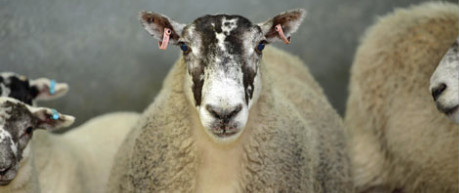Thursday 11th August 2016, 3:00pm
A team of researchers from Scotland’s Rural College (SRUC) is contributing to iSAGE a new multi-million pound, EU funded research project aiming to future proof our sheep and goat farming industry. The iSAGE project has been awarded nearly £6million (€7 million) by the EU’s Horizon 2020 fund. It will assess the key factors which could impact the sector over the coming decades, such as climate change, and consumer preferences. It will then develop tools to help sheep producers adapt to and thrive through the predicted changes.

SRUC and its UK project partners - AHDB, the National Sheep Association and the Organic Research Centre – are part of a consortium involving 28 partners from France, Finland, Spain, Italy, and Turkey, co ordinated by the School of Veterinary Medicine, Aristotle University of Thessaloniki in Greece.
The Focus for the SRUC team will be on creating
practical breeding goals and tools for the sheep and goat sector in
both Britain and across Europe.
"We want to ensure the sustainability of the sector in the long term. The only way to do that is to look at what the future could bring and help farmers prepare and adapt to those conditions.
The
project will look at how our climate and pastures might change, how
consumer and farmer attitudes and preferences could develop and then
design programmes which will ensure we can breed animals best suited to
those conditions.”
It is predicted that in Scotland and the UK the
climate could be milder and wetter compared to Mediterranean countries
which could see hotter and drier conditions. Another key difference is
that here sheep are mainly bred for meat and wool, while in southern
Europe sheep milk and cheese is far more popular.
"Different countries and environments require different types of animals. If, for example, we do have more wet weather in the UK, we could see more parasites on our pastures which means grazing animals will need to have stronger resistance to diseases they carry. Elsewhere however, if animals are living in hot, dry conditions, they will need to be bred to cope with heat stress.
Of course, we need to map consumer tastes and how they may change,” he comments. “If the trend for leaner meat continues, that will need to be incorporated, but we will also have to consider the nutritional value of the product, considering for example the appropriate fatty acid composition.”
Professor Georgios Banos, Scotland's Rural CollegeThe first year of the project will be in two distinct phases. The first will assess the current position in terms of the sheep and goat farming sector across Europe, while the second phase will focus on mapping the potential changes in terms of weather, pastures, and the markets.
The team will then move on to analysing data from over 2.5 million animals to identify the specific traits required for the ideal future sheep and goat breeds.
The project will run until 2020, when the researchers hope to be able to provide farmers across the UK and Europe with the genetic information needed to create sheep and goats best suited for the future.
Source: Scotland's Rural College (SRUC)